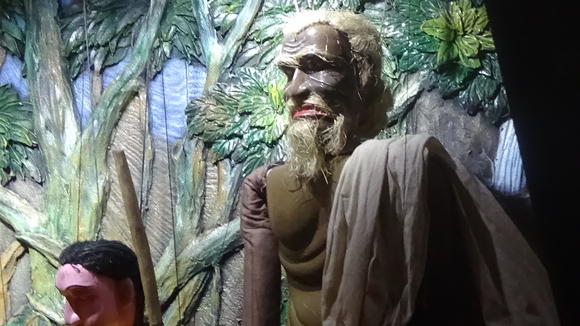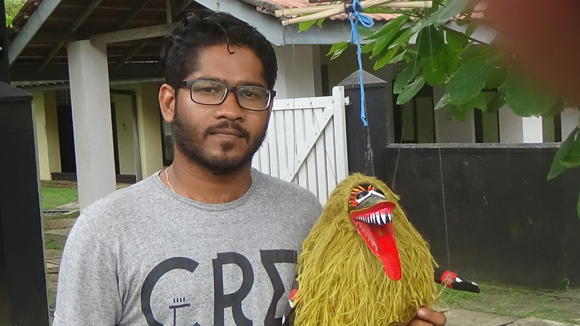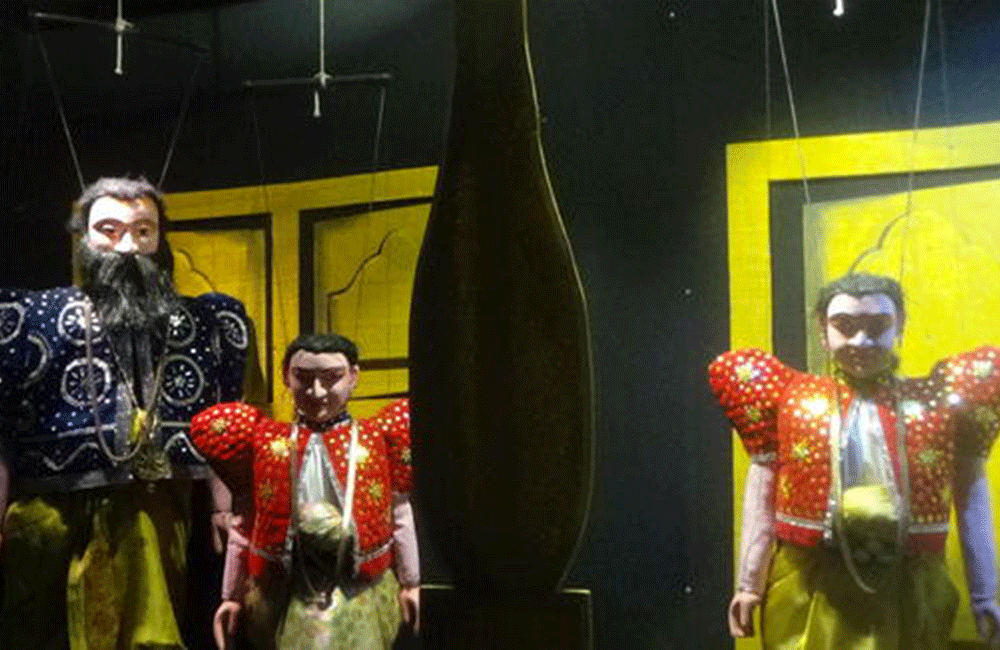Masks and puppets tell Sri Lanka's ancient tales
Rajpal Abeynayake
Puppets from the Ehelepola Kumaraya play, the story of a nobleman's son resisting a Sinhalese king influenced by the colonizing British (Photo by Rajpal Abeynayake)
In Ambalangoda, a vibrant Sri Lankan coastal town of fishermen, sunshine and traditional mask makers, two unique and ancient art forms are battling for survival. One, known as rukada, uses almost life-size puppets to thrill and amuse audiences.
Its not-so-distant cousin is the art of masked drama called kolam, which translates best as "farce." In kolam, costumed men wearing masks act out ancient stories, often to raucous effect. What unites these two art forms are the traditional masks made in Ambalangoda and other maritime towns of Sri Lanka's south, such as Balapitiya.
Both traditions deal with material from Buddhist lore -- the Jathaka tales, which are a retelling of stories from the Buddha's previous incarnations. Comedy and farcical plotlines are a large part of both types of performance.
But the masks themselves, which form the basis of the colorful puppet faces too, originate from a much darker place in the people's psyche.
Masks from Ambalangoda and other maritime towns were first used thousands of years ago in exorcism rituals, in what was called "devil dancing" or thovil. This tradition of ritual therapeutic theater dates back over 2,500 years to pre-Buddhist times.

A puppet from ancient folk tale, dramatized.
The puppeteers from Ambalangoda also draw on the nadagam, the South Indian dance drama tradition imported from Tamil Nadu in southern India by colonizing Catholics.
Supun Gamini, a computer science and management graduate, is a fourth-generation puppeteer who has launched a determined effort to keep Ambalangoda's rukada art alive.
His greatest challenge, he said, is to work around some aspects of tradition that he feels deter people, especially the young, who prefer today's internet-generated popular culture instead.
Some of the traditions associated with masks and puppetry are dying out, but that may not be an entirely bad thing, according to Gamini. Ignoring some aspects of the ritual may be the way to let the puppet art and masked dances live on.
"For example, each time they cut down a kaduru tree for crafting masks or puppets in the days of my forefathers, they enacted elaborate rituals before the tree was felled," said Gamini. These rites were meant to propitiate the divine beings.

Supun Gamini, a puppeteer, with a puppet styled after the thovil mask tradition.
